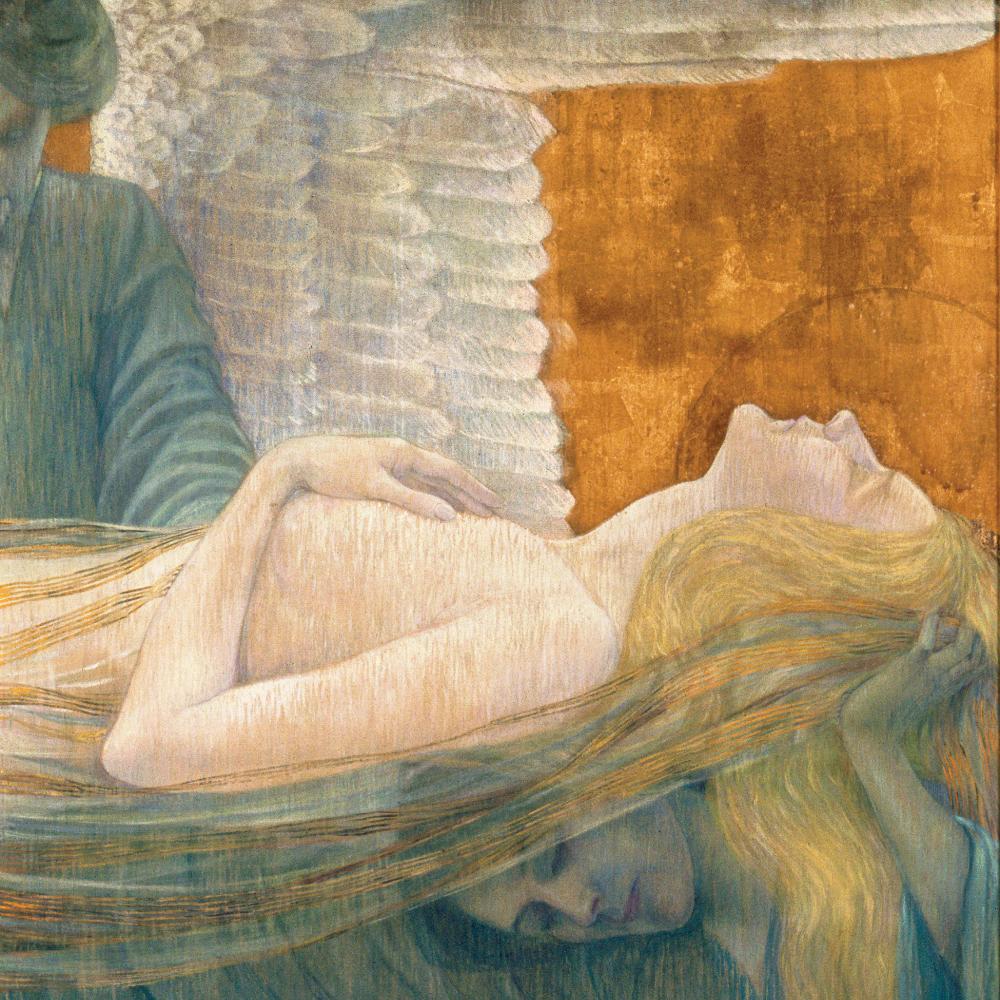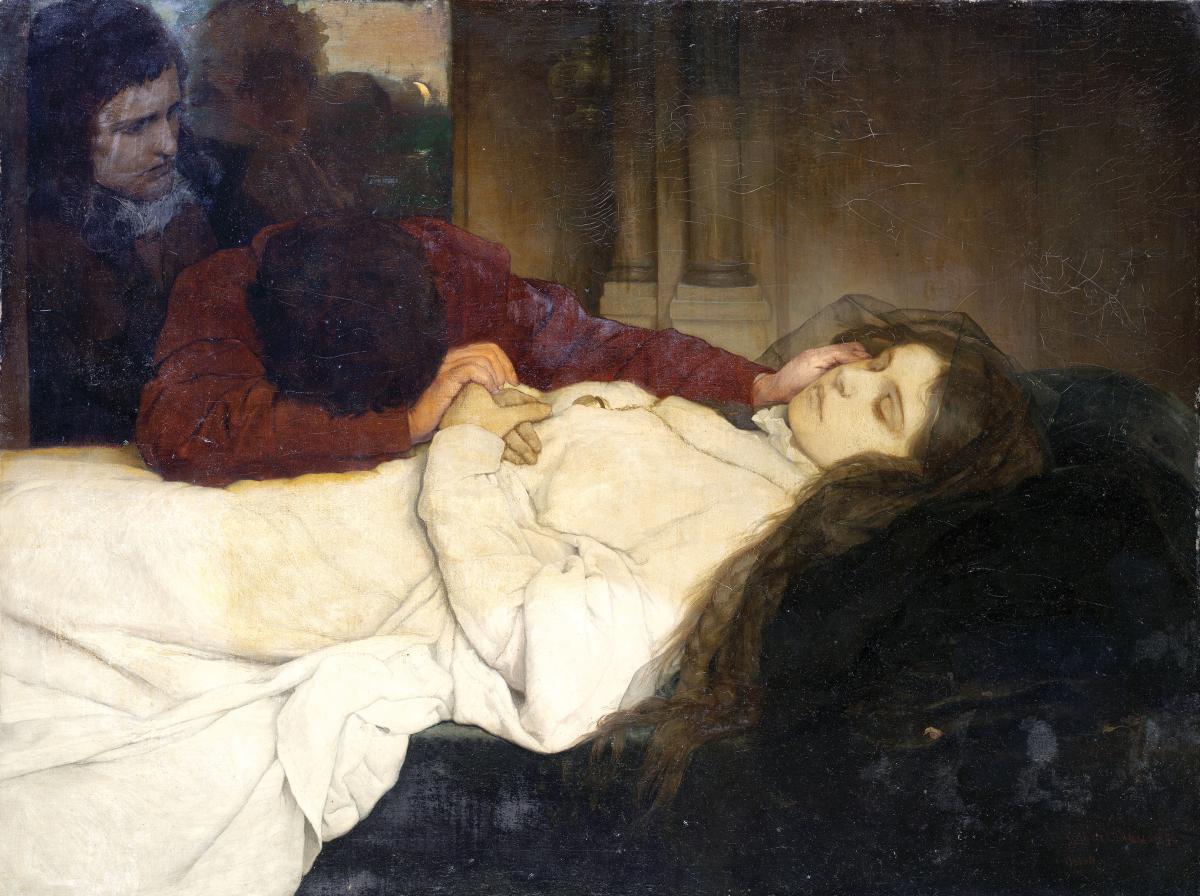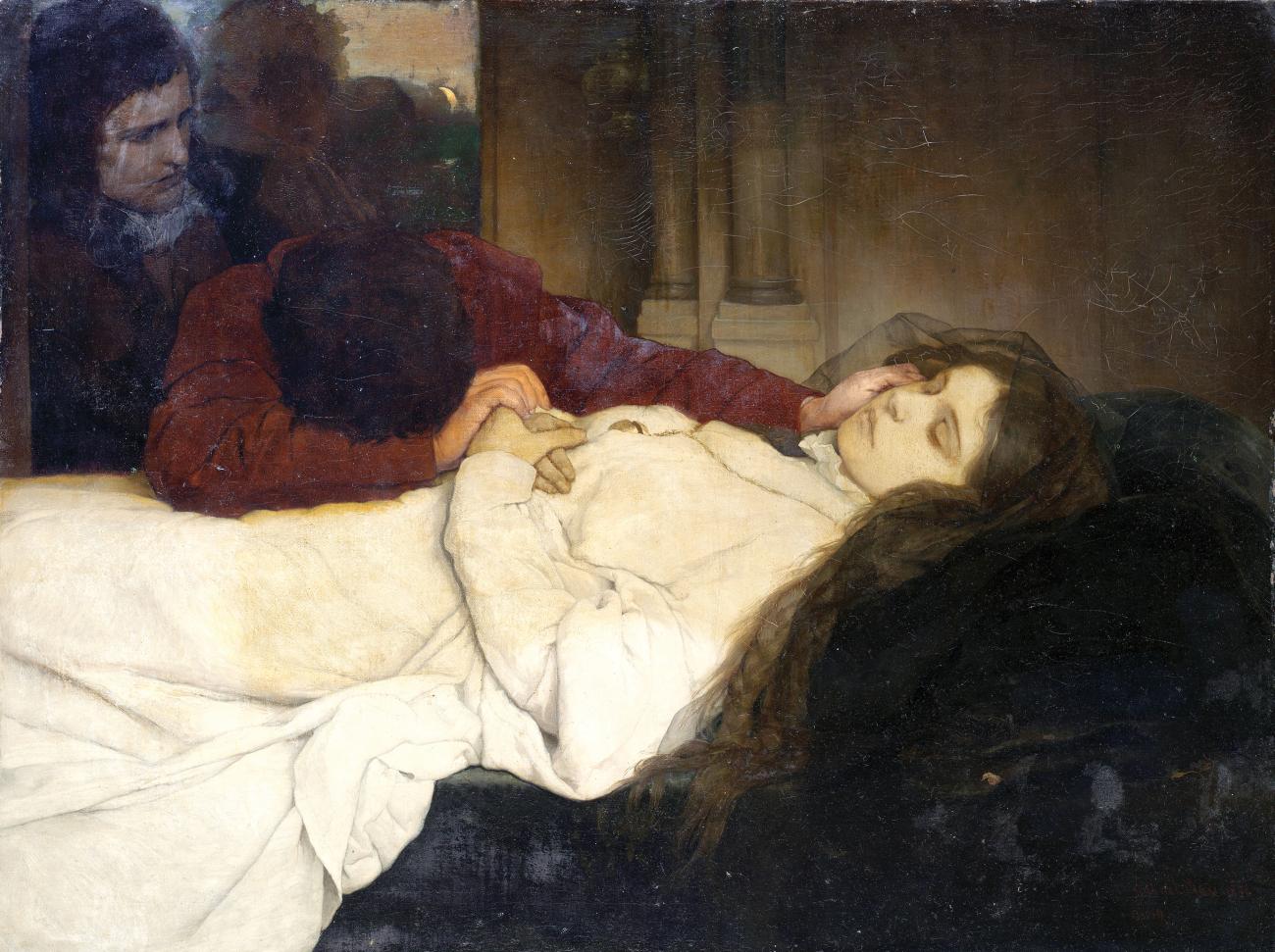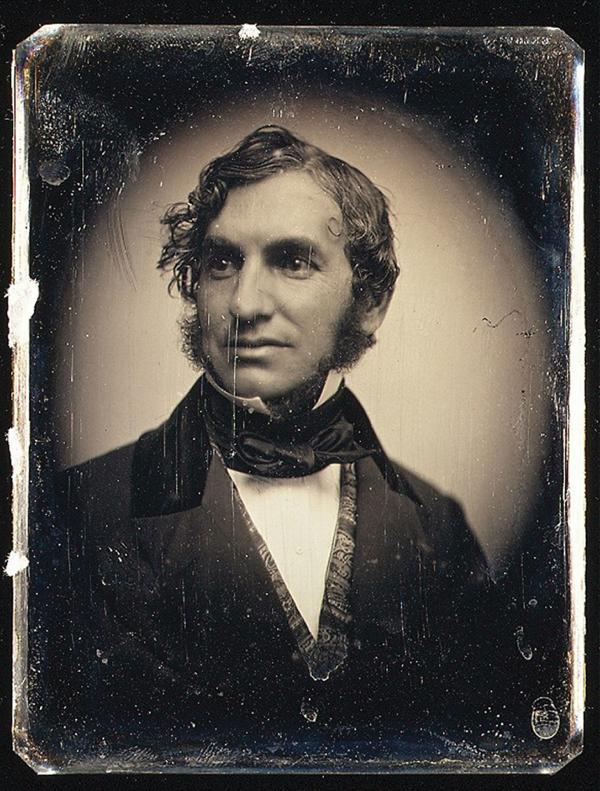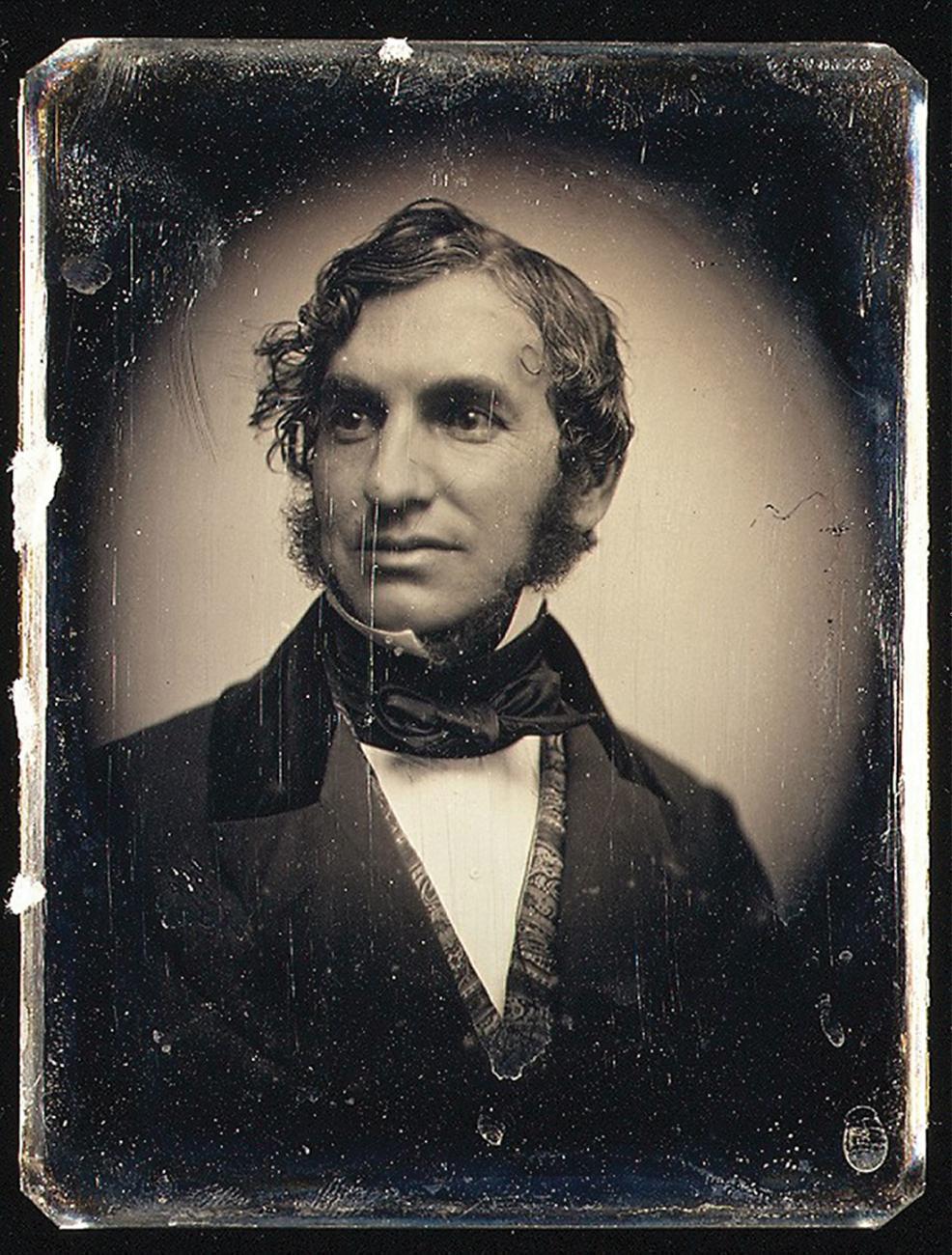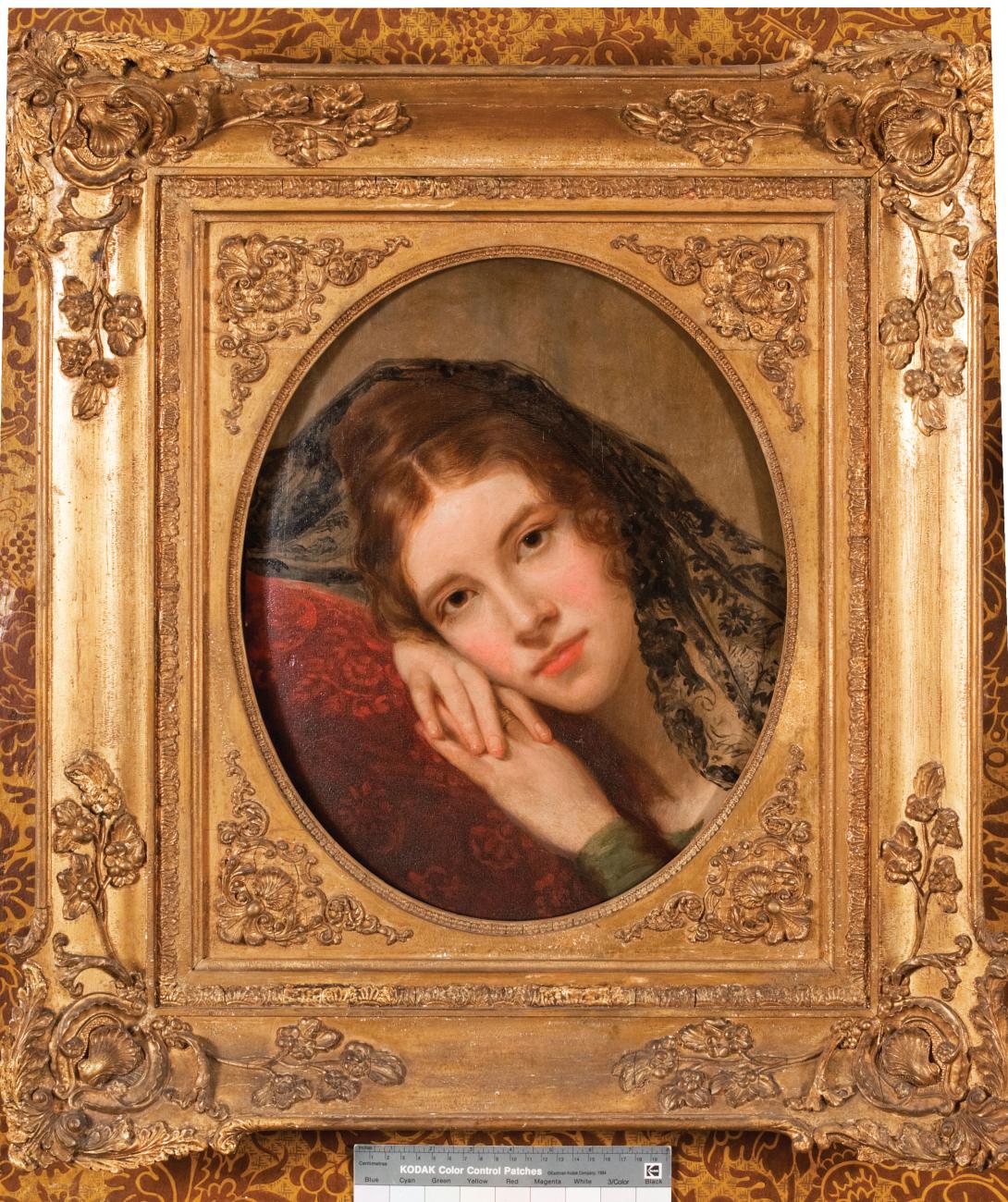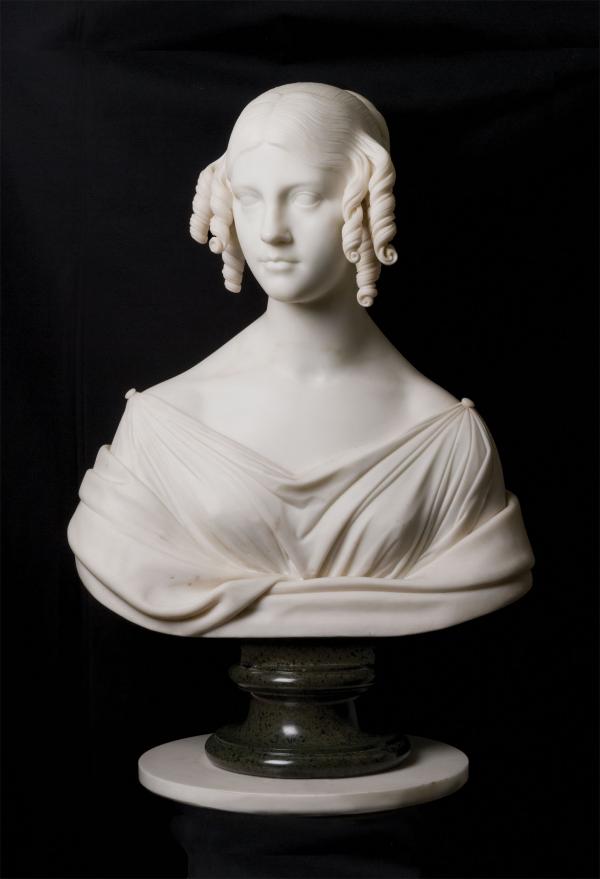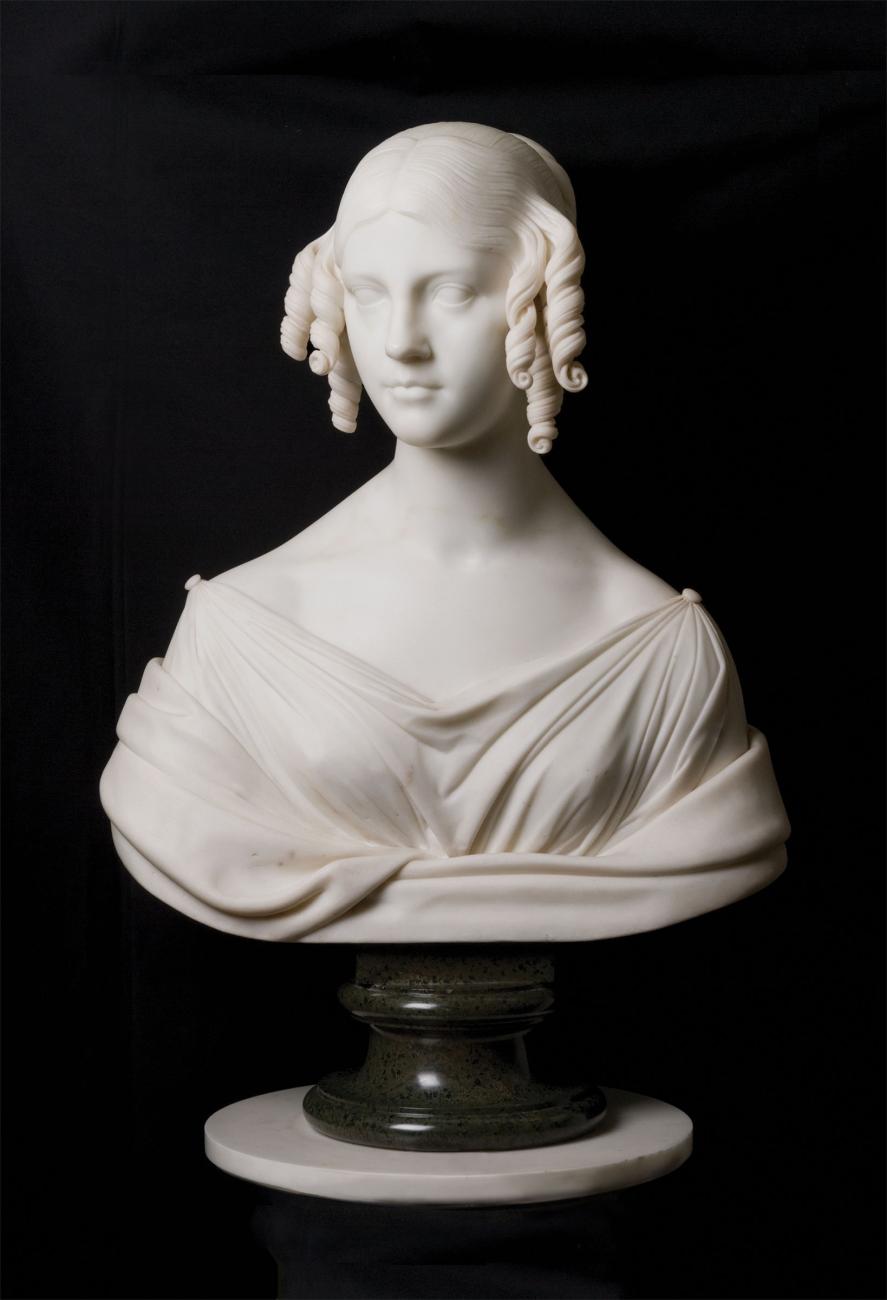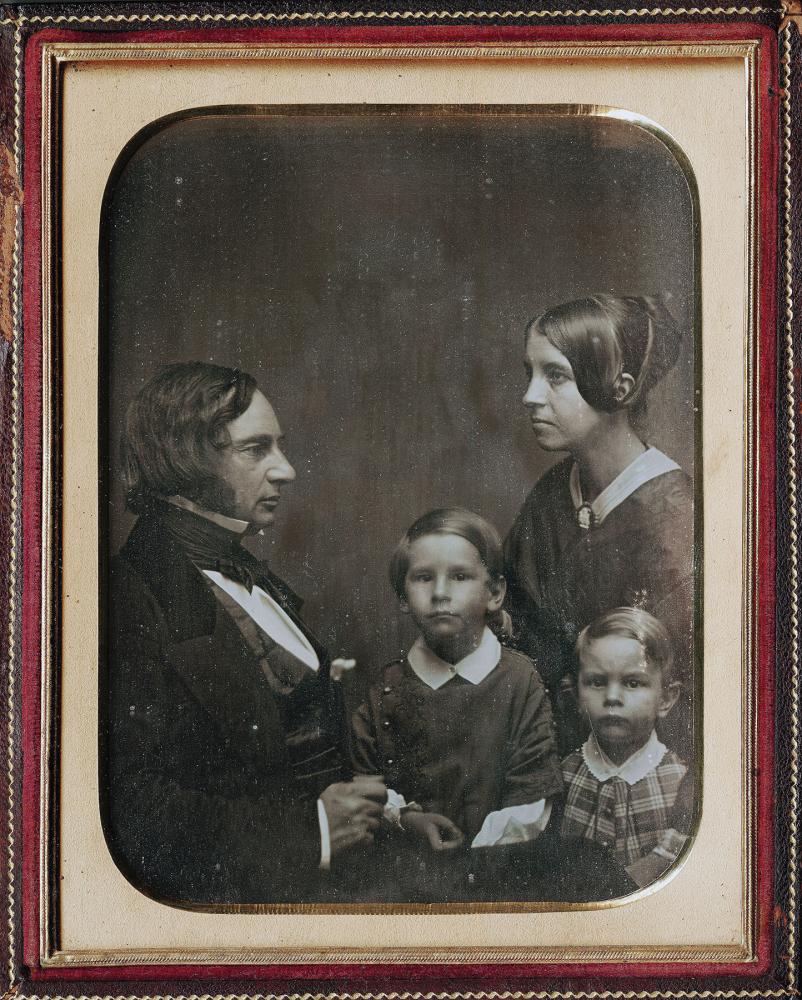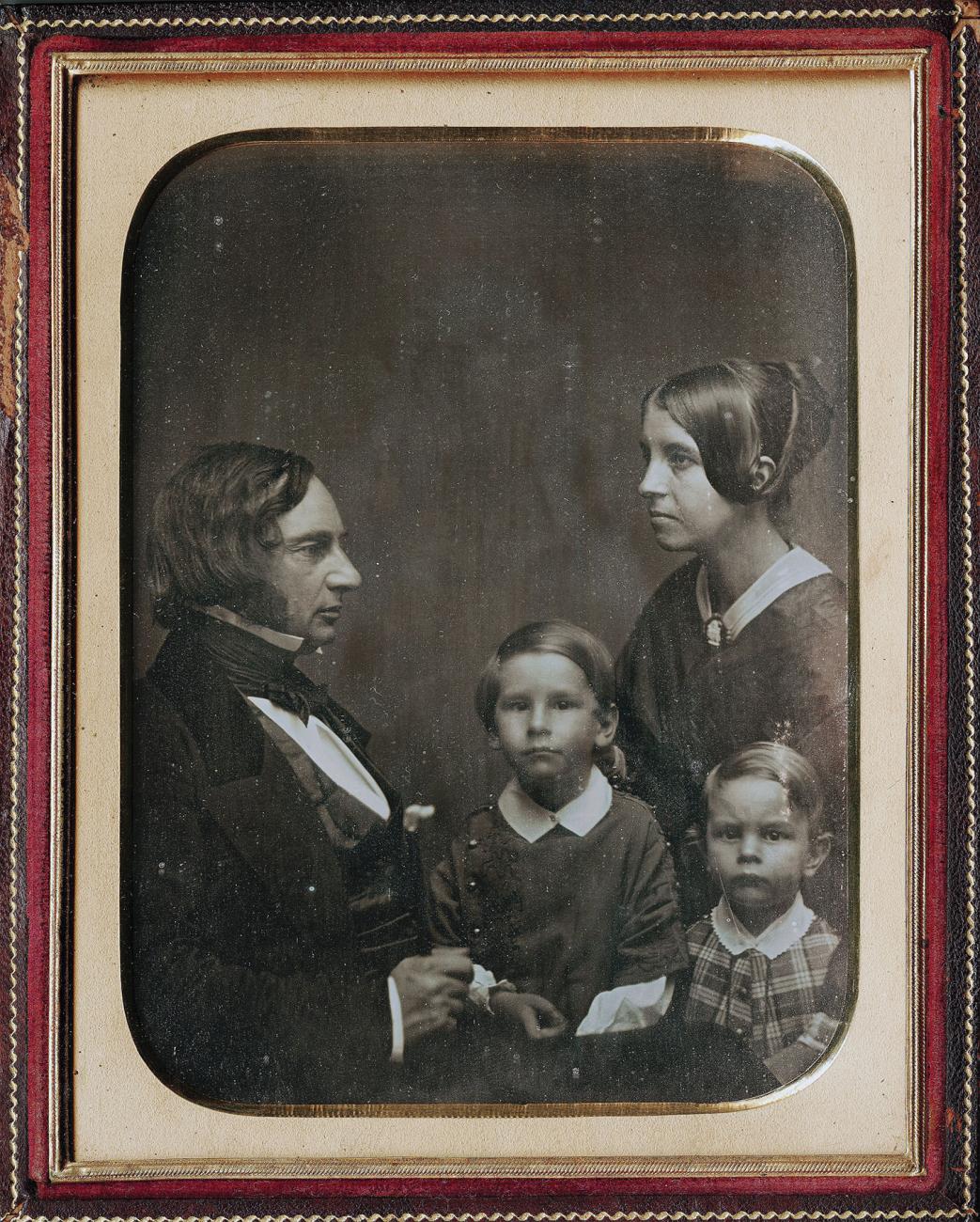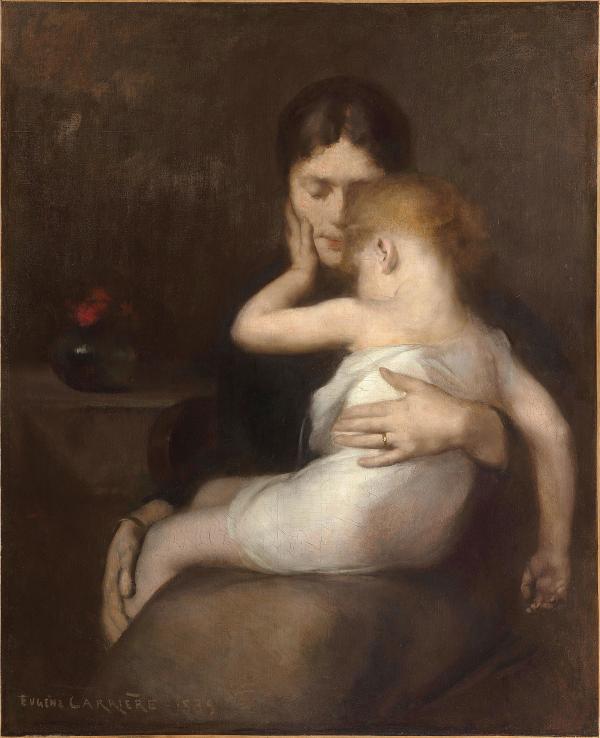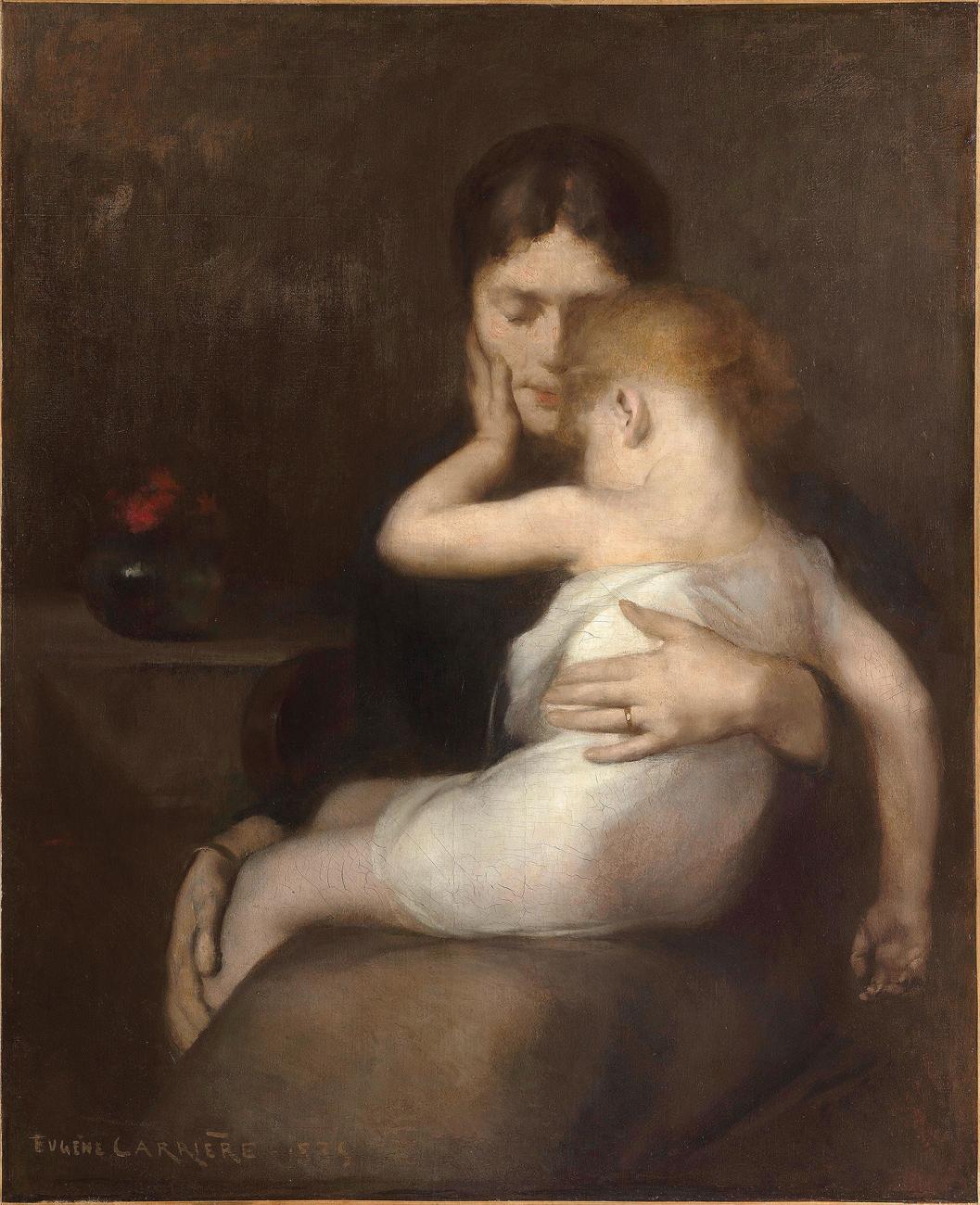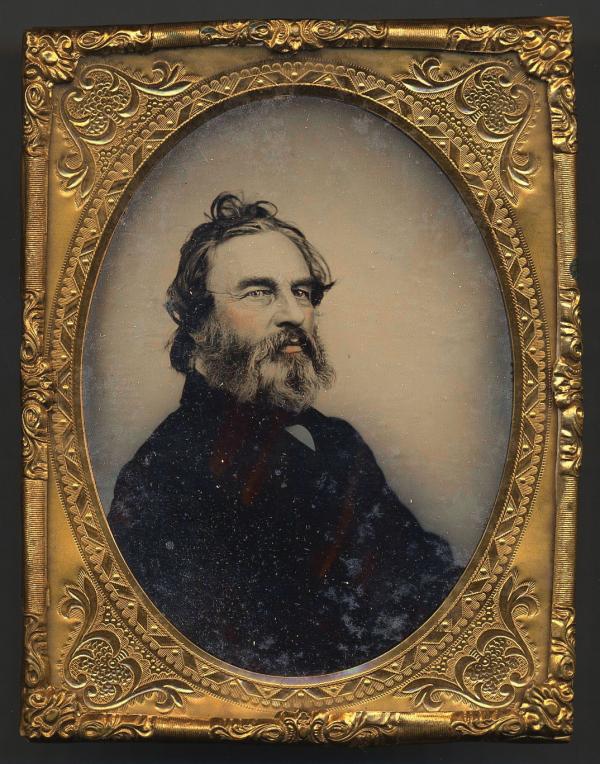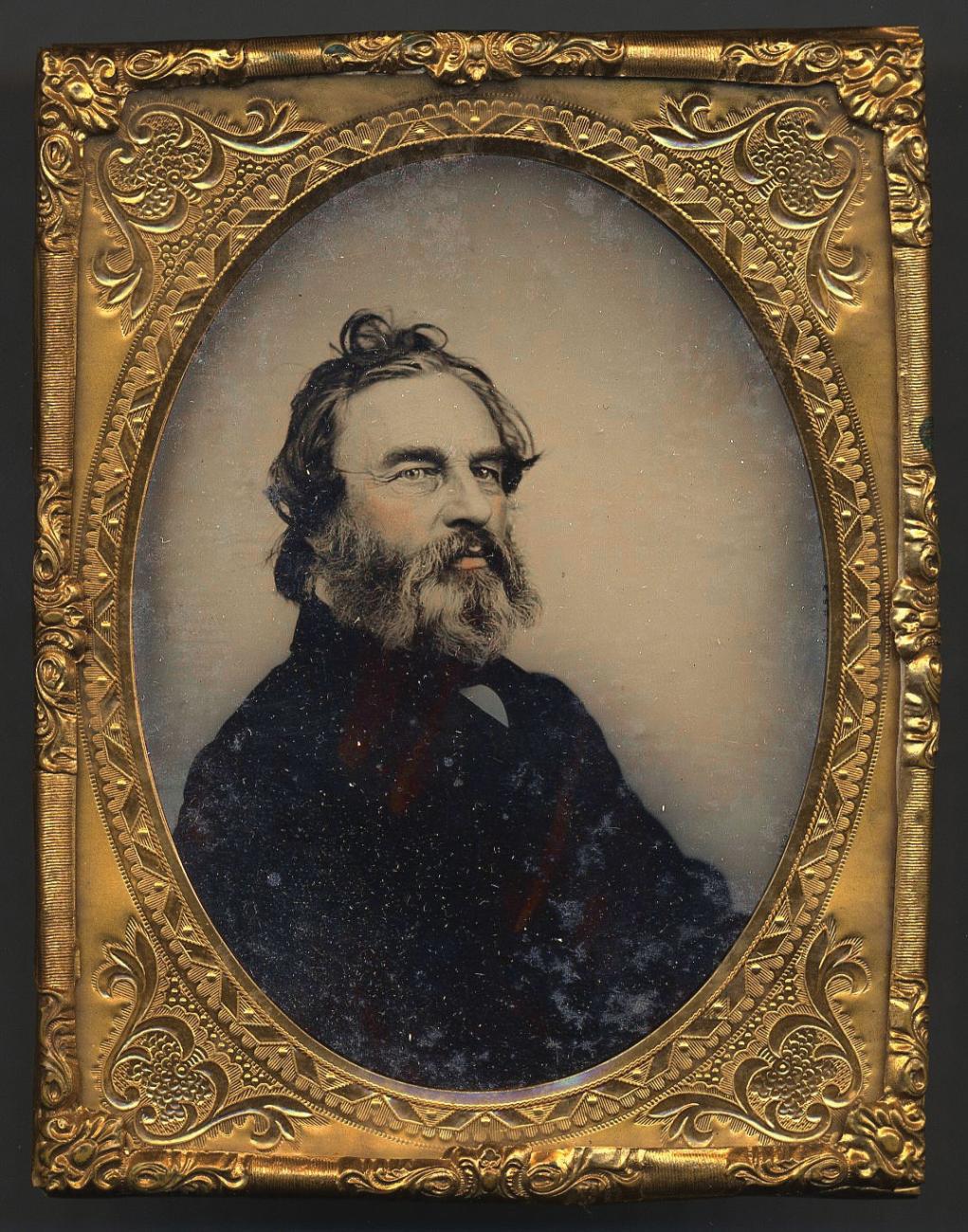Dealing with the specter of contagion and death was a constant source of anxiety in nineteenth-century America, a facet of everyday life made especially immediate by the grim reality of the numbers. By the early 1900s, one out of every seven deaths in the United States and Europe was caused by tuberculosis, according to figures compiled by the Centers for Disease Control and Prevention, and the very randomness of its reach made it especially onerous. Commonly known for centuries as consumption, the highly infectious disease played no favorites when choosing its victims, striking across all segments of society, rich and poor, young and old, men and women of all races and ethnic groups—an ever-present existential threat, in today’s parlance, if ever there was one.
For most of the 1800s, consumption was thought to be a hereditary, constitutional sickness of nonspecific origin, and not communicable. It wasn’t until 1882 that the German scientist Robert Koch identified the tuberculosis bacillus, helping convince medical and public health officials that it was indeed contagious; he would win the Nobel Prize in Medicine in 1905 in recognition of his efforts. An immediate consequence was the increased observance of precautionary measures known more immediately to millions of people around the world in recent months as “social distancing.” To the constant fear of that scourge were added visitations of cholera, smallpox, typhus, and yellow fever, each also accounting for thousands of deaths. During the Civil War, camp fever, a term used for a variety of contagious illnesses endemic to the close-quartered military encampments of the period, most severely typhoid fever, took the lives of more soldiers, along with diarrhea and dysentery, than injuries inflicted in combat. It was only toward the end of the nineteenth century that vaccines came into widespread use, with antibiotic drugs following in the twentieth.
One of the more compelling backstories I encountered while researching my recently published book, Cross of Snow: A Life of Henry Wadsworth Longfellow, was how the principals of my study responded to uncertainties particular to the times, most tellingly life-and-death situations they frequently faced, over which they had no control. “Yesterday I was at Mount Auburn, and saw my own grave dug; that is, my own tomb,” Longfellow wrote matter-of-factly to George Washington Greene, one of his closest friends, on May 21, 1837, 45 years before he finally would occupy the freshly dug plot in Cambridge, Massachusetts. “I assure you, I looked quietly down into it without one feeling of dread. It is a beautiful spot, this Mount Auburn. Were you ever there?”
The thirty-year-old poet had recently returned to the United States from an extended trip abroad to assume duties as the newly installed Smith Professor of Modern Languages at Harvard College. Among tasks that awaited his attention was the burial of Mary Storer Potter Longfellow, his first wife, who had died 18 months earlier in Rotterdam at the age of twenty-three, the victim of what modern physicians surmise to have been an “infected incomplete miscarriage,” a complication that would be routinely diagnosed and treated today. Although emotionally shattered by the loss of her, Longfellow had chosen to remain in Europe and continue learning the languages he would be required to teach at Harvard: Swedish, Danish, Finnish, Dutch, Old Icelandic, and German, to go along with the French, Spanish, Italian, and Portuguese he had mastered a decade earlier in preparation for a similar position at Bowdoin College in Brunswick, Maine. After arranging for the shipment of Mary’s remains, he resumed the task at hand.
Among those urging Longfellow to continue with his studies in Europe was George Ticknor, the professor who handpicked him as his successor for the Harvard job. The independently wealthy scion of a prominent Beacon Hill family, Ticknor had decided to step back from teaching at the age of forty-three, following the death of a five-year-old son, the cause a “very obscure” heart infection later determined to have been pericarditis. In the years ahead, Ticknor would channel his energies into a variety of worthy pursuits, including the writing of History of Spanish Literature, a mammoth work in three volumes considered definitive from the time it first appeared in print in 1849, and leading the effort to establish in 1852 the Boston Public Library, the first major free municipal library in the United States. “While my little boy lived, I looked only to the future, and considered him only as a bright hope, that was growing brighter every day,” he had written to a close friend in Maine, Charles Daveis, explaining his reasons for retiring. “But now that he is gone I look at the past and present, and, yielding all the future, in a spirit of resignation, to God, I feel the immediate loss, the pressing want of something that was so dear to me, and that was associated, without my knowing it, to everything around and within me.”
In a follow-up letter to Daveis, Ticknor further clarified his feelings in a way that echoes other responses to loss and grieving we see in the letters and journals of the period. “Sorrow still dwells among us, and must for a season,” he began in tones that evoke a kind of benediction. “The melancholy which is impressed on the heart by severe suffering, as you well know from experience, seems to come up afresh long afterwards, from depths you knew not of at the time, just as the passing bell continues to give up its deep and heavy tones long after it has ceased to be struck. But this, too, will pass away, under the healing influence of time and those higher principles of our nature which, with the help of religion, are able to control all the rest.”
Writing to Longfellow immediately upon hearing the “dreadful news” of Mary’s death, Ticknor firmly counseled his young colleague to “pray give yourself to constant and interesting intellectual labor,” a form of inner healing, he stressed, “that will go further than any other remedy, at least such is my experience.” Heeding Ticknor’s advice, Longfellow hunkered down in Heidelberg for the winter and “buried himself in books, in old, dusty books,” all the while admitting to his father in Maine that his “bereavement” was “deep and unutterable,” and that “it required a great deal of effort to discipline my thoughts to regular study.” For six months he soldiered on, but “the monotonous every day life” had him declaring in his journal finally that “I cannot study: and therefore think I better go home.” In the very next sentence, he had another idea: “Perhaps the air of the Fatherland will do me good.” With that, he set out on a summer tour of the Rhineland that took him eventually into Switzerland, and the serendipitous meeting at an Interlaken inn with Frances Elizabeth Appleton, an eighteen-year-old Boston socialite everyone called Fanny, then traveling through Europe with her family on a trip that had also been undertaken as a form of therapy for shared grief.
Three weeks before the Appletons set sail for France in November 1835, Fanny’s twenty-year-old brother, Charles Sedgwick Appleton, had died of consumption, a devastating blow to his three siblings and their father, each of whom was confronted with the agony of what had suddenly become a double loss. Two and a half years earlier, the family matriarch, Maria Theresa Gold Appleton, died of the same sickness at the age of forty-six. Nathan Appleton was serving out a term as a member of Congress in Washington, D.C., as his wife lay dying in Boston at the time, and had never forgiven himself for failing to be at her bedside, his frantic efforts to get home by teams of post-horses hired along the route proving futile by a matter of hours. Maria Theresa had struggled mightily to retain consciousness, refusing any medications that might have put her to sleep, according to a journal kept by her daughters. “She kept her eyes anxiously fixed on the clock, to watch for the hour of [our] Father’s arrival, whom she expected to see, until the last moment,” they wrote. “This evening Father arrived, having heard that all was over, just before arriving in town. He was much agitated, and aggrieved, after traveling day and night.”
Nathan Appleton’s immediate response then was to take his children on a two-month tour of upstate New York, traveling by steamboat, railroad, and stagecoach to Niagara Falls and Canada, then meandering back home through Vermont and New Hampshire. For part of the journey they traveled on the Erie Canal, which had opened the western interior of the region to more expeditious travel just a few years earlier. The bonding experiment was such a success that when Charley Appleton died on October 26, 1835, Nathan Appleton decided an even grander adventure was in order, one normally reserved for affluent young men of the period, not women, but these were particularly anxious times, and he moved quickly. “We are now so desolate, with nothing to anticipate, and one loss making the few left more anxious for each other than ever, that Father has actually sent to N[ew] York to engage our passage to sail for Europe in a fortnight,” Fanny wrote Robert Apthorp, a close family friend from childhood, just three days after Charley died. “The slightest thought of it staggers and bewilders me so that I dare not yield to the excitement—and the indifference with which it now is viewed would have seemed last year incredible.”
Striking in every respect, Fanny Appleton was no typical young woman. At a time when higher education was the exclusive province of men, she had been impeccably taught by private tutors from early childhood, the pioneering educators Elizabeth Palmer Peabody and George Barrell Emerson, the art instructor Francis Graeter, and the expatriate writer and political theorist Francis Lieber, notable among her personal teachers and mentors. A voracious reader in several languages, Fanny was driven to embrace intellectual achievement on a variety of stimulating levels, as her rich body of correspondence, journals, and sketches persuasively demonstrate. For this two-year grand tour of the continent, she brought along a portable lap desk and an ample inventory of paper, art supplies, and writing instruments.
Joining the group were two of her cousins, one of them, the consumptive William “Willy” Sullivan Appleton, brought along by Fanny’s father with the faint hope of restoring his failing health, travel then considered a palliative to the disease. Their leisurely travels through France, Italy, Switzerland, and Germany were aboard two elegant coaches purchased in Paris and made with comfort and style in mind. As winter turned to spring and spring to summer, concern began to grow about Willy’s deteriorating condition and the pressing need to get him to higher, cooler ground. Departing Florence in June 1836, they headed for Bologna by way of the Apennines, providing Willy with some temporary relief. Word of a cholera epidemic in Venice persuaded them to head directly to Modena; from there they proceeded to Verona, and then on to Milan. Arriving in Switzerland toward the end of July, they took rooms in a “dashing new hotel” overlooking Lake Thun.
On the day Fanny learned that Longfellow sent up his card to her father with the hope of making the acquaintance of some fellow New Englanders he had learned were passing through, she was fresh from sketching a succession of breathtaking attractions in the countryside. “Hope the venerable gentleman won’t pop in on us,” she added, “tho’ I did like his Outre-Mer,” an acknowledgment, at least, that she had some sense of who he was, and that she had read his first book, a travelogue published a few years earlier. That he wasn’t “venerable” at all—he was twenty-nine years old at the time—became apparent several days later when the two finally did meet at an inn in Interlaken. Invited by Nathan Appleton to travel with them for a fortnight, Henry eagerly joined the entourage, riding in one of the carriages with Fanny, Mary, and Willy.
There is nothing in either of the journals Henry and Fanny kept at this time to indicate any kind of a spark that might ignite a lasting relationship. What both did record of their interactions, however, suggests an appreciation each had for the other’s mind, a key consideration since they both valued intellectual engagement above all other qualities. Not lost on Fanny either was the kindness and attention Henry paid to her cousin Willy, whose condition had taken an alarming turn for the worse.
Henry’s offer in Lucerne to stay with Willy while the others went out for a bit of sightseeing was greatly appreciated by Fanny. “He is a most gentle spirit,” Henry wrote in his journal, “resigned and uncomplaining, as one who has already commenced ‘his conversation in heaven,’” his reference to a famous homily by John Tillotson, the Anglican Archbishop of Canterbury from 1691 to 1694. To pass the time during the long rides, Henry and Fanny read aloud from uplifting sermons such as these for Willy’s benefit, and selections from William Hazlitt’s essay “The Fear of Death” (1822), notable for its opening line, “Perhaps the best cure for the fear of death is to reflect that life has a beginning as well as an end.” Willy found especially pleasing two “soul-thrilling” sermons of the Unitarian minister Orville Dewey, particularly that “touching one on the ‘Voices of the Dead.’”
Rowing on Lake Zurich with Henry, Mary, and her older brother Tom, who had joined the traveling party, did little to improve Fanny’s spirits. “How can I think of myself while he is growing so feeble daily, so patiently relinquishing the active habits he delights in and breaking our hearts with his self-forgetting thoughtfulness of all about him?” A physician brought in for an examination grimly reported that Willy was not likely to survive a voyage home; even a journey into Paris “would be too much” for him. “Oh God—but how will the poor child bear this terrible disappointment!” Fanny lamented. “He seems calm tho’ it is his death-knell, but he cannot get up stairs without aid.” An evening walk with Henry left Fanny contemplating the “dead, blank winter” to come, “but what is that to the pall the mind can weave for itself now.”
In Schaffhausen, Fanny and Henry walked into town to replenish their reading supply for the road ahead, and enjoyed a “long talk” in a park before heading back to the hotel. When they returned, Willy was organizing “all the little presents he has collected for his family” back home, Fanny marveled, and talked “with the utmost cheerfulness about the dispersal of them,” knowing “they can never be given by his own hand and will when received be sad legacies” of his passing. For Mary and Fanny, there were brooches acquired in Geneva to remember him by. Henry was greatly impressed by the young man’s courage, which he lauded that night in his journal. “It seems impossible that he should live many days. He is himself conscious of this, and is making his little gifts to friends with a calmness which is beautiful. How heavenly it is to die thus.”
On August 17, Henry received word that Clara Crowninshield, a dear friend of his late wife who had accompanied the couple on their European trip, was anxious to leave Heidelberg, where he had left her in the care of friends while he went off on his own, and return to the United States. Though Fanny had little to say one way or the other in her journal about whatever feelings she may have developed for Henry, she did concede two days later, with a paucity of words, that she did “miss Mr. L. considerably.” Some brisk fall air had “invigorated” Willy somewhat, but her general mood was otherwise gloomy. On August 24, a week after Henry’s departure, he died, peacefully, in his bed.
Henry received word of Willy’s death from Tom Appleton. “He desired me to remember him to all of his friends and for me to thank those who had been kind in service to him in his illness, among whom he felt that you were warmly included.” Grief-stricken at this loss, Fanny wrote nothing in her journal for several weeks, though she did open up a bit several months later in a letter to Robert Apthorp, sharing her impressions of the European trip thus far. Most of what she had experienced—the cultures, the art museums, the ballets, the theater, the Old World landmarks, the scenery—had been a revelation. “But over all this magic, anxiety, decay and death have thrown a tinge of sadness and there is a green corner by the blue Rhine where many aching hearts have bound the circle of their thoughts. I meant to write much to you about my sweet cousin William for the unsullied purity of his character and gentle sweetness of his disposition so ennobled his decay, shed such an atmosphere of heavenly hope and cheerful resignation around his last moments.”
Fanny admitted to some uneasy “presentiments” when she left home the previous year, but she had no idea that what she feared then would involve anyone other than herself. “I mention this only because it is the sole bit of superstition I ever indulged in. And I was again called to breathe comfort and hope to a gentle spirit hovering between two worlds,” the memories of her brother Charley and her adored mother, Maria Theresa, still fresh. In the end, she found William’s acceptance of his fate nothing less than inspirational. “From first to last he saw and felt his danger and met it with a Christian fortitude which was truly astonishing.”
Although not evident in his correspondence or diary of those first days he spent in her company, Henry Wadsworth Longfellow was dazzled by Fanny’s mind, artistic sensibility, and razor-sharp wit—that, and her willingness to engage intellectually, her zest for life, her deep and abiding compassion for others. He described her in a letter to George Washington Greene several months later as nothing less than a “genius,” and confessed to being hopelessly in love.
The “courtship” of Fanny Appleton, if it can be called that, was a drama played out over the next seven years, and is a central component of Cross of Snow. Marked predominantly not by ups—but by anguished downs—Henry’s strategy to win her hand included the writing of Hyperion, an ill-advised “romance” that featured as a subtext the unsuccessful wooing of a charismatic young woman—Mary Ashburton—by a grief-stricken suitor, Paul Flemming, the true identities of the principals no mystery to many people on Beacon Hill or at Harvard in Cambridge. When they finally did resolve their issues and become husband and wife on July 13, 1843, it represented, in Henry’s words, a “Vita Nuova of happiness!” and ushered in eighteen prolific years of creative output that included the writing of the book-length narrative poems Evangeline, a Tale of Acadie (1847), The Song of Hiawatha (1855), and The Courtship of Miles Standish (1858),and numerous stand-alone classics such as “The Building of the Ship” (1849), “The Children’s Hour” (1860), and “Paul Revere’s Ride” (1861). Once together, moreover, the couple was inseparable. “It is part of our theory of life,” Henry would write to an admirer in Europe, “never to be separated.”
They lived in a magnificent Georgian mansion on Brattle Street in Cambridge overlooking the Charles River, a structure so imposing that George Washington chose it for his command headquarters and official residence for nine months during the Siege of Boston (1775–76); it is owned today by the National Park Service and known as Longfellow House–Washington’s Headquarters National Historic Site. The couple had two sons in short order, Charles and Ernest. The arrival of their third child on April 7, 1847, a girl named Fanny for her mother, made medical history by being the first birth in North America assisted by ether as an obstetric anesthetic.
Introduced just five months earlier by doctors at Massachusetts General Hospital, its use at that time was limited to general surgery and dentistry, the fear in childbirth being that ether could threaten the health of the mother or be unsafe for the baby. When Fanny learned that a woman in Scotland with a severely deformed pelvis had painlessly delivered a healthy child after being given the vapor, she lobbied Henry to investigate on her behalf. Finding no physicians willing to take the risk, and with time growing short, he turned to Dr. Nathan Cooley Keep, founding dean of the Harvard Dental School, who administered the miraculous compound to Fanny during labor while a midwife monitored the delivery. Fanny took great pride in the accomplishment, despite opposition from both branches of the family. “I am very sorry you all thought me so rash and naughty in trying the ether,” she wrote to one of Henry’s sisters, but was mindful nonetheless of what she had accomplished. “I feel proud to be the pioneer to less suffering for poor weak womankind. This is certainly the greatest blessing of this age and I am glad to have lived at the time of its coming and in the country which gives it to the world, but it is sad that one’s gratitude cannot be bestowed on worthier men than the first discoverers, that is men above quarreling over such a gift of God.”
Although the years of their marriage were overwhelmingly idyllic, the death of Little Fanny, as the child was called, from a vaguely diagnosed “congestion on the brain” 18 months later left both parents devastated, prompting Henry to write the poignant poem of loss and grief “Resignation” (1850). Fanny expressed her feelings privately in a chronicle she kept of her children’s daily activities. “My courage is almost broken,” she confided, and described how watching her daughter slowly “sinking, sinking, away from us” was a period of “agony unutterable.” She told of holding the child and hearing “the breathing shorten, then cease without a flutter,” whereupon she “cut a few locks” of hair from the child’s “holy head” and had her placed in the library “with unopened roses about her, one in her hand, that little hand which always grasped them so lovingly.” Henry recalled the loss with equal tenderness: “For a long time, I sat by her alone in the darkened library. The twilight fell softly on her placid face and the white flowers she held in her little hands. In the deep silence, the bird sang from the hall, a sad strain, a melancholy requiem. It touched and soothed me.”
Everyone, at some point, must contend with the loss of loved ones from natural causes, and Fanny and Henry were no exception, their response to these sad events unfailingly expressed with grace and dignity. Nothing in their experience, however, could have prepared them for what transpired on July 9, 1861, a hot summer day when the family normally would have been enjoying the sea breezes at their summer retreat in Nahant, but were home so Fanny could be close to her dying father in Boston. After returning from a morning by Nathan Appleton’s bedside, she decided to cut some locks of hair from her seven-year-old daughter, Edith. While sealing a snippet in an envelope with wax from a lighted candle, her hooped muslin dress caught fire, setting her ablaze in an instant. Trying desperately to snuff out the flames with a small rug, Henry suffered burns on his hands and face, leaving scars that he would hide in the years ahead with the long white beard that became so familiar to his millions of admirers. Fanny survived the night, her horrible pain at length lessened by the arrival of some ether, but the injuries were too severe, and nothing further could be done. Her demeanor in these final hours was described by those in attendance as “perfectly calm, patient and gentle, all the lovely sweetness and elevation of her character showing itself in her looks and words.”
Henry was inconsolable at first, but there were several young children who needed him now more than ever. “I have never seen any one who bore a great sorrow in a more simple and noble way,” the Boston author John Lothrop Motley reported in a letter to his wife. “I hope he may find happiness in his children.” Describing his state of mind to the writer George William Curtis, who had written a moving letter of condolence, Longfellow apologized for being unable to write a fuller response. “I am too utterly wretched and overwhelmed,—to the eyes of others, outwardly calm; but inwardly bleeding to death.”
Over time, Henry would be productive in numerous ways, a singular achievement being his translation into English of all three canticles of Dante’s Divine Comedy, the first American to do so, and to this day greatly admired for its accuracy and fidelity to the original text. On the eighteenth anniversary of Fanny’s death, he wrote a sonnet he called “The Cross of Snow,” an extraordinary poem of loss and grief that remained unpublished during his lifetime, and gave me the title for the book I wrote about his life and his work. His death in 1882 was mourned everywhere his poems were read. He was buried in the family plot on Indian Ridge Path in Mount Auburn Cemetery, alongside his two beloved wives and his toddler daughter. His younger brother and first biographer, Samuel Longfellow, would inform a friend that the casket was decorated simply, with two palm branches and a spray of passion flowers, the symbolism of the two chosen mindfully: “He had known both the suffering and the victory.”

